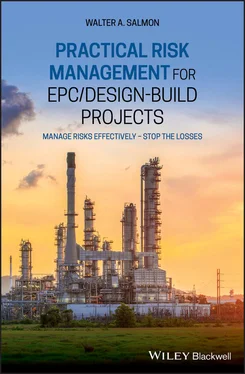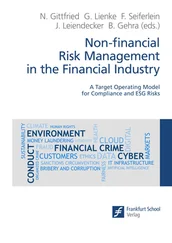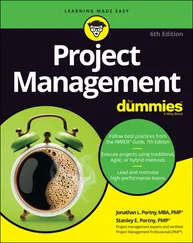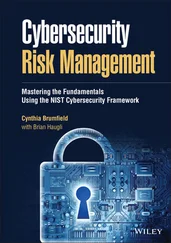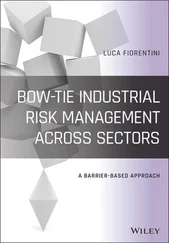For those who consider that they fully understand the ins and outs of the different contracting arrangements covered therein, Chapter 2may be considered to be not so useful, and some readers may even choose to skip directly to Chapter 6. Nonetheless, I venture to suggest that Chapters 3, 4and 5are worth a read by anybody responsible for putting bids together, or who wishes to know where things can often go very wrong before implementation of the Project begins to get underway.
My approach in Chapter 6has been to pinpoint, from my standpoint, the appropriate Manager to whom the responsibility for identifying and managing each specific risk should rightly fall, in line with the thinking displayed by the Association for Project Management (APM). 8 I have therefore written this book as if there is only one way to organise the corporate structure and allocate Project responsibilities within a construction company. No doubt that will make my work subject to a certain amount of criticism, notwithstanding that I took that approach in full recognition of the fact that there are many different schools of thought as to how construction companies and Projects should be organised. My thinking was that, no matter how a company organises its Corporate Management Team or deals with the management of its Projects, it is not possible to remove either the corporate risks or the project risks; they will always remain, and the only things that will change from one company to another are:
1 upon whom the responsibility for managing each risk falls,
2 how the importance of each risk is perceived, and
3 how each risk is to be handled.
I also considered that, if there is no clear organisational framework or management structure established, then the principles of Project Risk Management I mention could be deemed to apply to different roles/functions within the organisation. However, I intended to pin down with a greater degree of certainty what the risks are and which person is properly responsible for managing each risk (in my opinion, of course). Thereafter, having seen how I have applied the risk management principles to the preferred structure I have chosen to follow, others with differing views can then adapt those principles to accord with their own preferences for how their companies and Projects should be organised. In order to make it clear as to what management structure I am working to, Appendix Cshows the ‘EPC Project Management Team Organisation Structure’ I have employed and Appendix Dshows the ‘EPC Project Departmental Organisation Structure’ I have adopted.
To round out and complete the subject of Project Risk Management, I have also included three further Chapters, namely: Chapter 7(Reducing Joint-Venture/Consortium Risks), Chapter 8(Claims Management Risks and Problems) and Chapter 9(Identifying Hazards and Managing the Risks).
I had intended that construction industry students/newcomers should also be able to find the content of this book useful. In view of that, I am compelled to add the caution that the management structure I have adopted herein (for both the EPC Project team and the Contractor's company) must not be considered to be written in stone. It simply provided a means for me to allocate roles and functions/responsibilities in a structured manner, in an effort to ensure that I did not miss out discussing any key area of management. It therefore needs to be recognised from the outset that, within different companies, some of the functions/responsibilities I have allocated to a particular Manager may well be allocated to another Manager. Nonetheless, my hope is that my approach will enable those who have not had experience occupying or dealing with certain of the various management positions to be able to appreciate more fully what it takes to run an EPC Project efficiently and effectively. Ultimately, if all this book achieves is to encourage more discussion about the practical application of Project Risk Management in the construction industry (and for EPC and Design-Build Projects in particular) then I will consider that I have done some good, regardless of any flak that may come my way.
1.3 Generality of Contractual Advice Given
There are a number of standard forms of contract that deal specifically with lump-sum EPC/Design-Build Projects. For example:
the FIDIC Silver Book (‘Conditions of Contract for EPC/Turnkey Projects’), 9
the FIDIC Yellow Book (‘Conditions of Contract for Plant and Design-Build’), 10
the ‘ICE Conditions of Contract Design and Construct’, 11 and
the IChemE ‘Lump Sum Contract – The Red Book’. 12
However, International Oil and Gas Companies (such as BP, ExxonMobil, Gazprom, Lukoil, Petronas, Royal Dutch Shell and the like) commonly use (and will no doubt continue to use) bespoke contracts that have been tailored to the individual needs of each respective company. The use of such custom-compiled contracts is primarily because the standard forms of contract would need to be substantially modified to incorporate all the special requirements particular to each of those organisations.
In view of the above, the advice I give in this book has not been developed with reference to any specific standard forms of contract. In turn, that means that I have not attempted to deal with any of the particular terms and conditions that are found in the standard forms. I prefer to leave that to lawyers and, in any case, those topics are covered more than admirably in a number of well-known books. 13 However, I have tried to identify as many as possible of the uglier (unfair/one-sided) clauses that work their way into many contracts, whether the base document is one of the standard forms of contract or a bespoke contract.
1.4 Common Elements for Construction Projects
Construction work is ever present amongst us, whichever direction you care to look, taking on many different forms. Construction activities range from major city redevelopments to petrochemical plants, and with so many things in between; the list of possible construction work seems endless. And the Construction Industry is simply huge. For infrastructure work alone, according to McKinsey & Company the value anticipated to be undertaken worldwide over the period 2018–2023 is in the order of USD 77 trillion. 14
There are many steps that need to be taken first before even one spade can strike the ground in earnest to commence the physical on-site work for a major Project. For most Projects, a feasibility study will need to be conducted before the Employer will be prepared to commit the necessary resources to proceeding with the implementation activities. A typical feasibility study will address the questions of the legality of the proposed Project and whether its construction would be technically feasible, as well as being fully justified on economic grounds. It is not usual for a Contractor to be involved in ascertaining the viability and feasibility of a Project unless the Contractor is required to be involved in organising and/or providing the finances. This requirement can sometimes be necessary under an EPC Contract if payment to the Contractor is not due to be made until a number of years after the facility has been operating. It is most certainly required in Projects where the Build-Operate-Transfer (BOT) concept is employed. 15 BOT Projects may also be implemented under an EPC arrangement. The problems for some Projects can start with an inadequate feasibility study, which can then lead to severe cash flow problems for the Employer (and, ultimately, the Contractor). To avoid the possibly disastrous problems that an inadequate feasibility study can cause, it has been proposed by some (see Hyari and Kandil) that a series of peer reviews should be conducted of all feasibility study material. 16
Читать дальше
